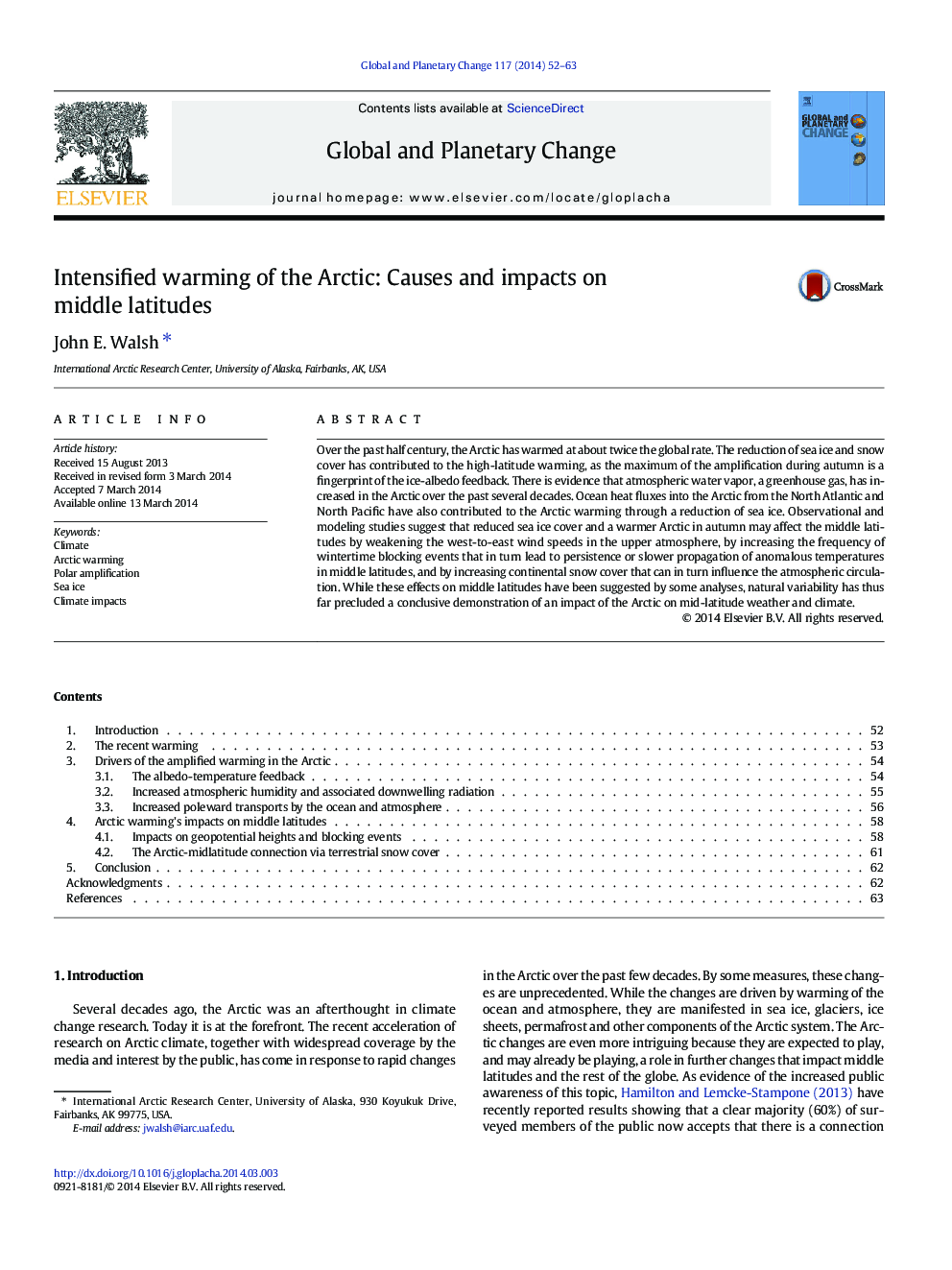| Article ID | Journal | Published Year | Pages | File Type |
|---|---|---|---|---|
| 4463442 | Global and Planetary Change | 2014 | 12 Pages |
Over the past half century, the Arctic has warmed at about twice the global rate. The reduction of sea ice and snow cover has contributed to the high-latitude warming, as the maximum of the amplification during autumn is a fingerprint of the ice-albedo feedback. There is evidence that atmospheric water vapor, a greenhouse gas, has increased in the Arctic over the past several decades. Ocean heat fluxes into the Arctic from the North Atlantic and North Pacific have also contributed to the Arctic warming through a reduction of sea ice. Observational and modeling studies suggest that reduced sea ice cover and a warmer Arctic in autumn may affect the middle latitudes by weakening the west-to-east wind speeds in the upper atmosphere, by increasing the frequency of wintertime blocking events that in turn lead to persistence or slower propagation of anomalous temperatures in middle latitudes, and by increasing continental snow cover that can in turn influence the atmospheric circulation. While these effects on middle latitudes have been suggested by some analyses, natural variability has thus far precluded a conclusive demonstration of an impact of the Arctic on mid-latitude weather and climate.
